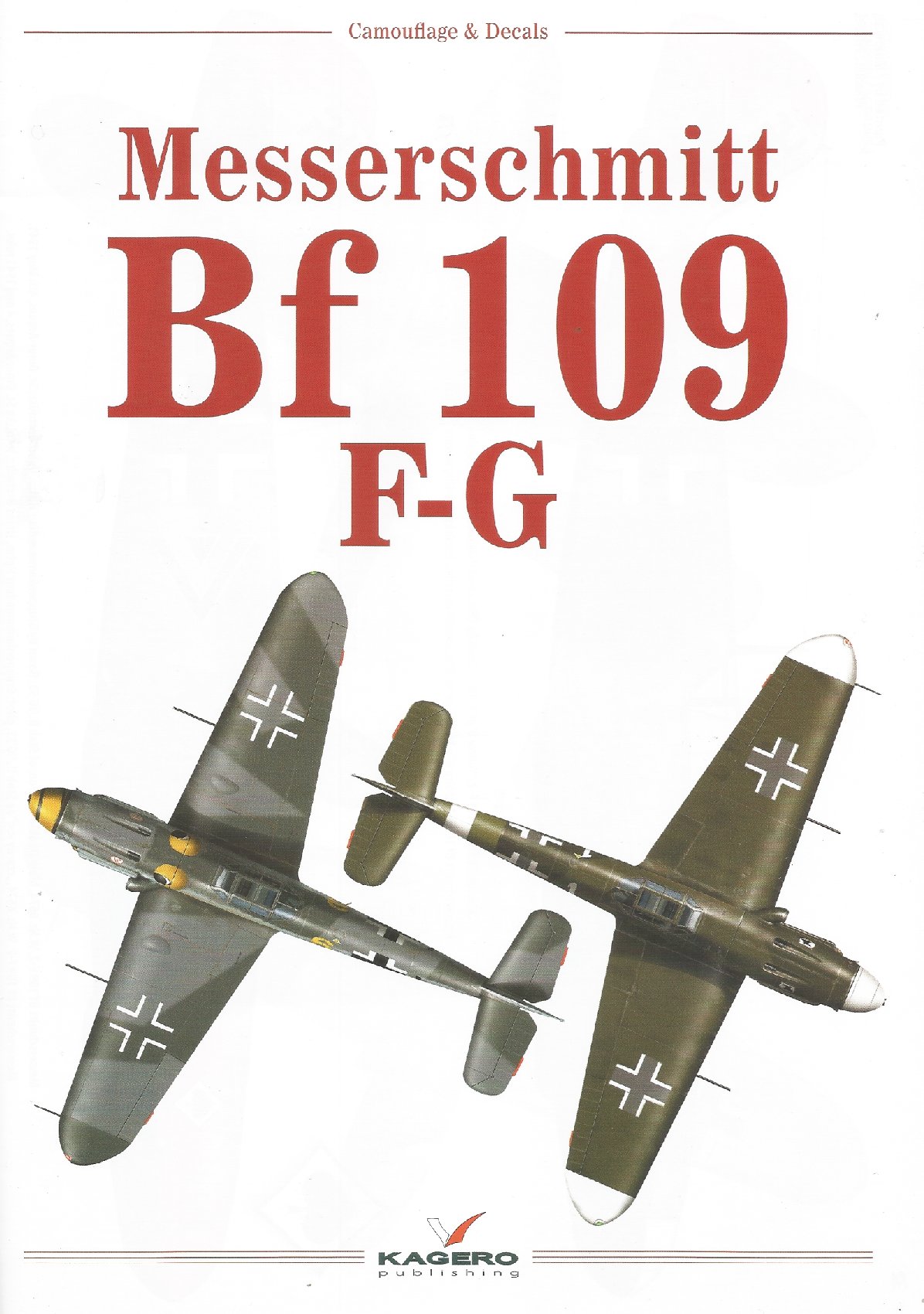Messerschmitt Bf-109 F-G Color Profiles and Decal
Information from the Product Web Page
The Bf 109 F (Friedrich) is the successor of the E version with the same engine in the DB 601E version - produced from the turn of 1940/1941. However, the airframe changed the external appearance completely: a new propeller cap was used, the front part of the fuselage was completely changed using a more rounded engine cover and the shape of the wings was changed from rectangular to rounded. The maximum speed at a ceiling of 6,000 m was 635 km/h. It was armed with two MG 17s and one MG 151 cannon.
The Bf 109G (Gustav) was equipped with a new DB 605A engine, some versions (G-1, G-3, and G-5) were equipped with a pressurized cabin. The first examples left the belts (ed: “belts = assembly line) in the spring of 1942. The armament consists of two MG 17 rifles (starting from the G-5/6 version, the heavier MG 131 caliber 13 mm) and one MG 151/20 cannon. The armament could be expanded by installing additional nacelles with cannons under the wings (modification R6) and - from the G-5 version - by replacing the MG-151/20 cannon built in the engine block with a 30 mm MK 108.
Color Profiles
There are 39 pages filled with excellent artwork showing the color schemes and markings of a number of Bf-109s. The captions which accompany the artwork are in English and Polish. The artwork will provide a great deal of guidance as to the location of the camouflage patterns, the national markings, and the personalized nose art and symbols found on these historic aircraft.
Decal Sheet
The decal sheet is in a clear plastic baggie inside the book, protected by a translucent “cover sheet” that fits over the decal sheet. The sheet includes markings for 1/72nd and 1/48th scale aircraft. An assortment of decals provides the Iron Cross national markings with white borders and black “fill”, and also for white borders without the black “fill”. Swastika markings are not included, intact and ready for application, but that is not unusual for models or decals being manufactured or printed in a number of nations. The swastika markings for the tail can be “assembled” by combining the “fishhook” shaped decals that are provided in both 72nd and 48th scale. When oriented correctly, the “fishhook” decals form the swastika symbol. While there are no “nose art” decals on the sheet provided, the illustrations throughout the book show the location of the symbols and nose art seen on a variety of Bf-109s.
The book is an excellent reference for those who have Bf-109s on their workbench. The artwork is absolutely stunning! This publication was released in Aug, 2021 and will become an excellent addition to the library of aviation art collectors as well as those who build Bf-109s.
Conclusion
This publication is highly recommended for its stunning artwork, usefulness as a research tool for modelers, helpful in guiding modelers in the shapes and locations of camouflage patterns and location of markings, useful decal sheet, and reasonable price. Thanks to Kagero and Casemate for providing this publication for review by IPMS/USA.






Comments
Add new comment
This site is protected by reCAPTCHA and the Google Privacy Policy and Terms of Service apply.
Similar Reviews